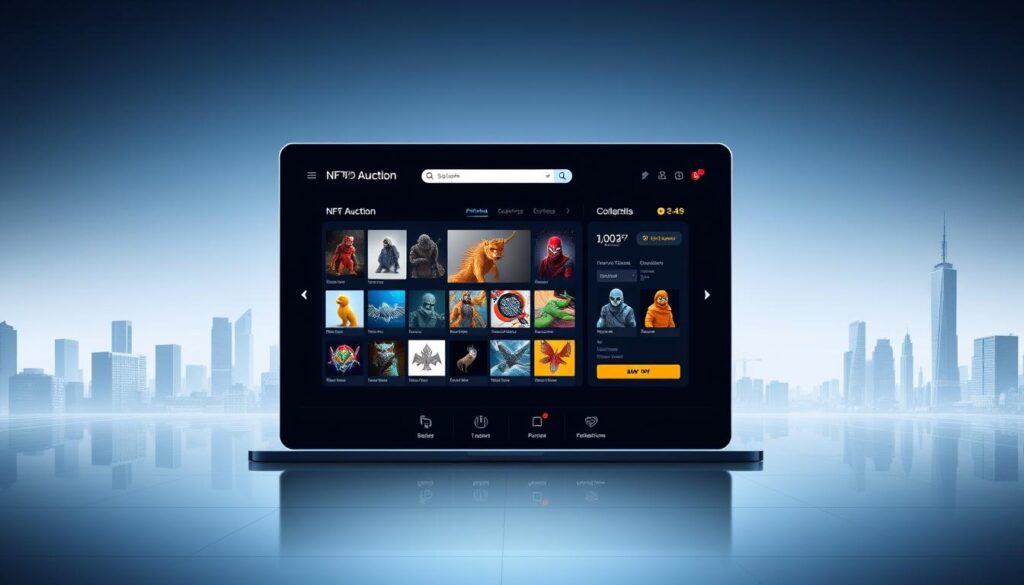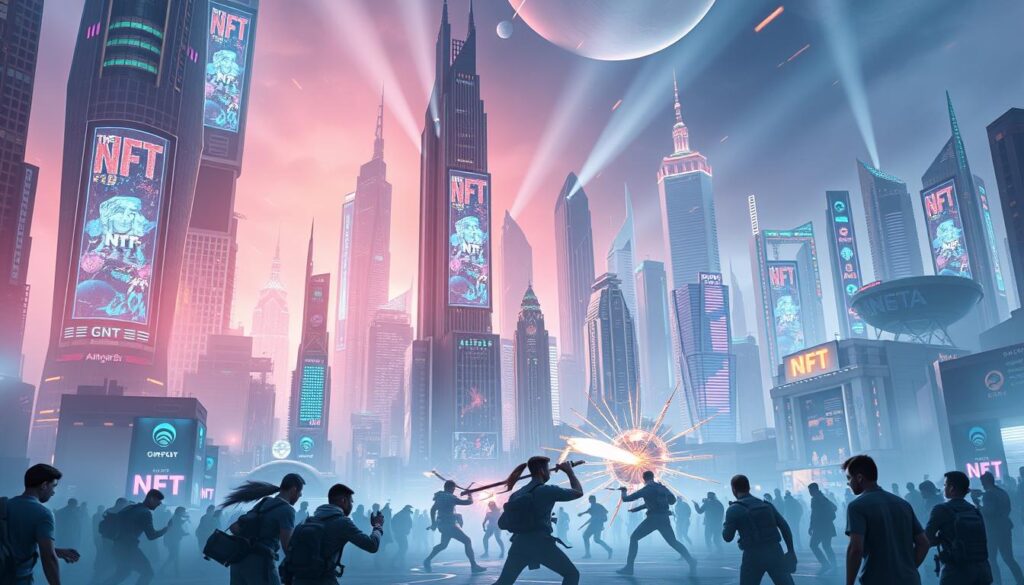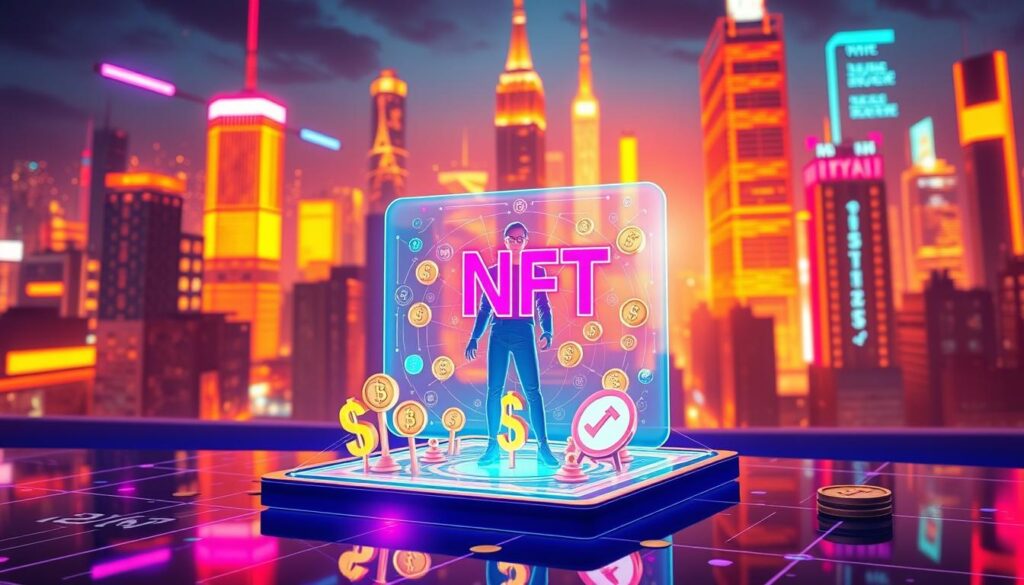Now Reading: NFT photography digital art marketplace: Explore, Trade, Showcase
- 01
NFT photography digital art marketplace: Explore, Trade, Showcase
NFT photography digital art marketplace: Explore, Trade, Showcase
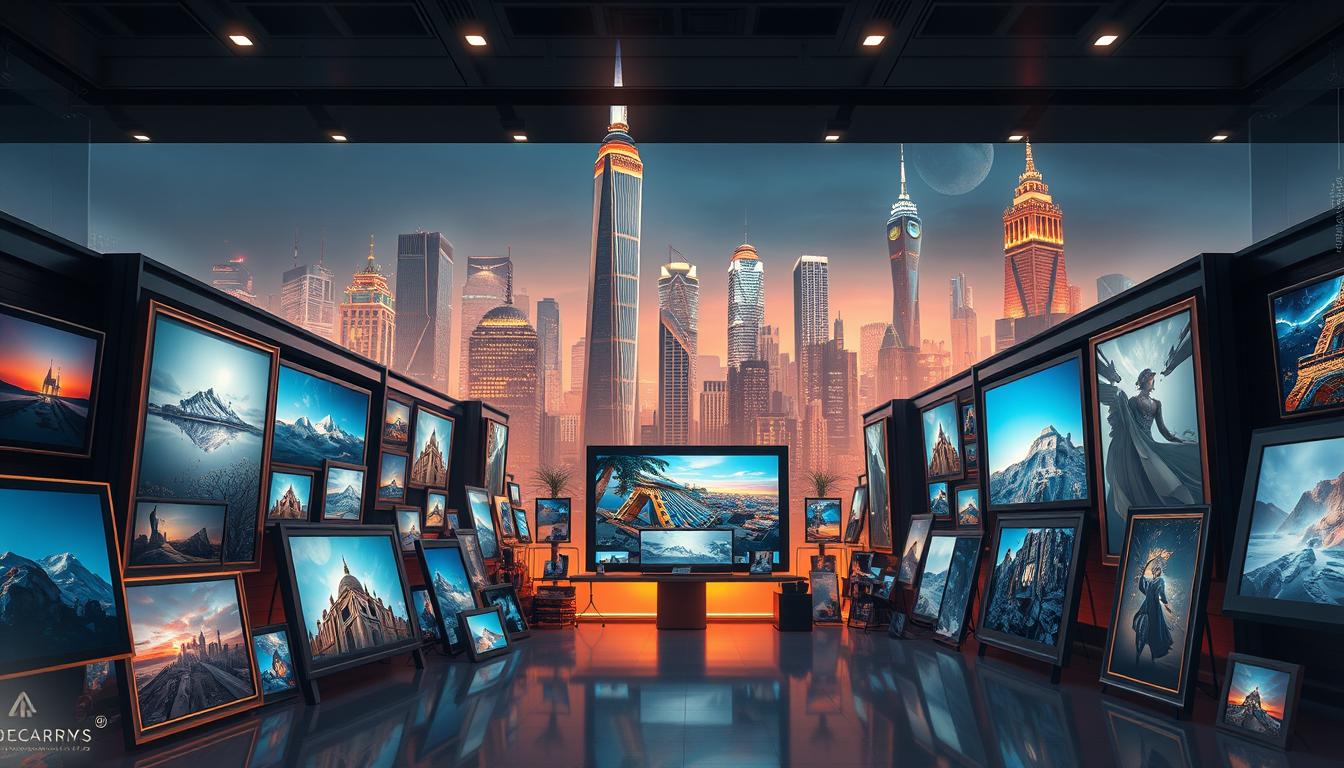
The creative world is witnessing a remarkable shift. For visual creators, a new frontier has opened up, offering unprecedented ways to monetise their passion. This landscape is built on blockchain technology, providing a secure and transparent system for ownership.
Recent analyses highlight the significant financial potential in this space. Certain creative sectors are proving to be exceptionally lucrative for creators. This makes it an attractive avenue for both established and emerging talents looking for new revenue streams.
Platforms have emerged as central hubs for this activity. These marketplaces, both centralised and decentralised, allow creators to list their work directly for a global audience. This system bypasses traditional intermediaries, giving greater control over pricing and royalties.
For those interested in collecting, this represents a unique opportunity. It allows enthusiasts to discover and support artists directly. The market continues to evolve, expanding its reach and refining the experience for all participants.
Key Takeaways
- Blockchain technology creates new, profitable opportunities for visual creators.
- Specific creative sectors within this new market show exceptionally high revenue potential.
- Specialised platforms allow for direct sales to a global audience of collectors.
- This system offers creators more control over their work and earnings through royalties.
- The market has grown significantly since 2021, encompassing various types of collectibles.
- Both general and niche-specific platforms are available to cater to different interests.
Introduction to the NFT Photography Digital Art Marketplace
A pivotal moment arrived for creative professionals as blockchain-based assets gained mainstream recognition. This technology opened new pathways for visual creators to connect directly with enthusiasts worldwide.
Background and Market Evolution
The year 2021 witnessed explosive growth for non-fungible tokens. Massive sales captured global attention across various creative sectors. Photography emerged as one of the fastest-growing niches within this expanding ecosystem.
Remarkable Commerce analysis revealed photographic works generate approximately 2,000% more revenue than other token types. This positioned the medium as the most lucrative sector for creators. The industry continues to evolve with photography leading this transformation.
Why Photographers are Turning to NFTs
Visual creators are embracing this technology for its direct connection with collectors. The system bypasses traditional intermediaries that often control pricing and distribution. This gives artists greater autonomy over their creative output and financial rewards.
Blockchain technology provides transparent ownership tracking for each unique digital asset. This builds confidence among buyers regarding authenticity and provenance. The immutable records create a secure environment for both creators and collectors.
Emerging photographers find this landscape particularly appealing. It offers recognition opportunities without requiring established gallery representation. The market democratises access while maintaining professional standards.
Understanding the NFT Ecosystem for Photographers
A new infrastructure has emerged that reshapes how photographers connect with collectors worldwide. This system operates through specialised venues where unique visual works find their audience.
Defining an NFT Marketplace
These trading venues function as digital spaces where creators list their unique tokens. They come in two main types: general platforms accepting various categories and specialised ones focusing on specific niches.
The environment operates without traditional intermediaries. Smart contracts handle transactions automatically, reducing costs and increasing efficiency. Most accept popular cryptocurrencies for purchases.

The Role of Blockchain in Digital Photography
Blockchain technology provides the foundation for this entire ecosystem. It creates an immutable ledger that permanently records ownership and provenance.
This addresses longstanding industry challenges around copyright protection and authenticity verification. The distributed ledger system establishes trust between creators and collectors without centralised authority.
Each photograph’s journey becomes transparently trackable. This gives visual creators unprecedented control over their works throughout their entire lifecycle.
Exploring Top NFT Marketplaces for Photography
The landscape for trading unique visual assets has diversified significantly with numerous specialised platforms emerging. Creators can choose from venues ranging from massive general marketplaces to niche-focused spaces dedicated specifically to photographic works.
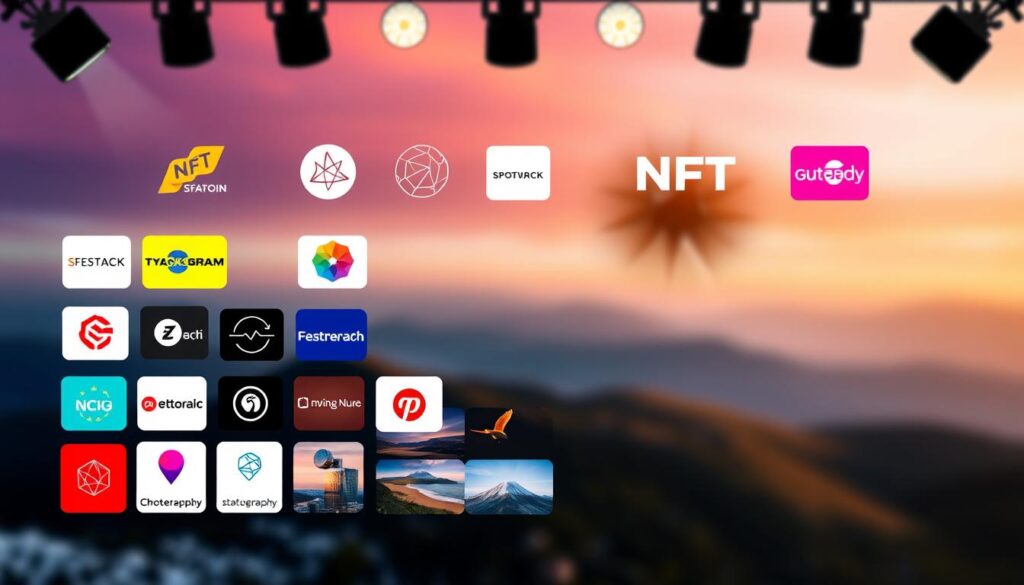
Highlights of Leading Platforms
OpenSea stands as the largest decentralised venue, processing $3.2 billion in trades during Q2 2022. Specialised spaces like Quantum Art focus exclusively on photographic creations with community-driven curation.
Exclusive platforms including Foundation and SuperRare maintain rigorous application processes. This ensures high-quality collections that attract serious enthusiasts. These venues have generated impressive earnings for creators.
Unique Features and User Experiences
Different platforms offer distinct advantages for creators and collectors. OpenSea’s lazy minting allows free listing with fees paid only after successful sales. Portion.io stands out by charging creators zero fees on transactions.
Some emerging venues like UniqueOne Photo reward photographers with native tokens. The user experience varies from invitation-only access to fully open systems. Each platform caters to different needs within the expanding ecosystem for visual creators.
Buyers can choose between custodial systems like Nifty Gateway’s omnibus wallet or self-custody options. This flexibility accommodates both novice and experienced collectors in the space.
NFT photography digital art marketplace: Key Platforms and Their Benefits
The ecosystem for tokenised visual assets comprises multiple platforms, each with specialised offerings for different creator needs. Understanding the distinct features helps visual artists select the most suitable venue.

Insights into OpenSea, MakersPlace and More
OpenSea stands as the pioneering platform, founded in December 2017. It accepts over 150 cryptocurrencies and offers innovative Lazy minting. This feature allows creators to list work without upfront gas fees.
MakersPlace maintains a premium positioning with rigorous authentication processes. The platform supports both cryptocurrency and credit card payments. Nifty Gateway operates a distinctive custodial system using an omnibus wallet.
Fee structures vary significantly across platforms. OpenSea charges 2.5% post-sale, while MakersPlace charges 5% on primary sales. Portion.io uniquely charges creators 0%, making it an attractive option.
Supporting Wallets, Blockchains and Trading Options
Wallet compatibility differs across platforms. OpenSea supports extensive options including MetaMask and Coinbase. More exclusive platforms like MakersPlace support limited wallet choices.
Ethereum blockchain remains universally supported. However, some platforms expand to additional networks. OpenSea supports Polygon and Solana, while Rarible accommodates Flow and Tezos.
Trading options include Fixed Price, Timed Auctions, and Reserve Auctions. Most platforms offer 10% royalties on secondary sales. This ensures creators continue earning as their work appreciates.
Creating and Marketing Your Photo NFTs
The journey from capturing an image to presenting it as a unique collectible involves several crucial stages that creators must master. This process combines technical preparation with strategic audience engagement.
Steps to Create and Mint Your NFT Photographs
Begin by selecting visually striking images with compelling narratives. Choose a platform that aligns with your goals and create a digital wallet. Upload your high-resolution work and add detailed metadata.
Pay the required gas fee to complete the minting process. Each piece receives a unique token ID, establishing its authenticity. This makes it available for purchase by collectors worldwide.
Effective Promotional Strategies and Social Engagement
Leverage social media platforms to showcase your creations. Share behind-the-scenes content and artist interviews. This builds anticipation for upcoming releases.
Collaborate with other artists to expand your reach. Participate in online communities and relevant events. Offer limited editions to create urgency among buyers.
Setting the right price point attracts serious collectors. Active engagement helps establish credibility over time. These strategies increase your chances of successful sales.
Legal, Copyright and Security Considerations
Legal protection forms the foundation for successful participation in this emerging ecosystem. Before creating any tokenised visual work, photographers must address critical ownership and compliance matters. These considerations ensure both creative and financial security throughout the entire process.

Protecting Your Digital Assets and Ensuring Authenticity
Copyright verification represents the first essential step. Creators must hold clear rights to their photograph before minting. This includes obtaining permissions from models or property owners featured in the work.
Smart contracts provide automatic royalty distribution for secondary sales. This system ensures photographers receive ongoing compensation as their work appreciates. The technology handles these transactions without manual intervention.
Licensing rights require careful specification during each purchase. Photographers should define how buyers may reproduce or display their art. Clear terms prevent disputes and protect intellectual property interests.
Security measures extend beyond the initial sale. Investing in a secure wallet protects tokens from cyber threats. Two-factor authentication and backup recovery phrases add crucial protection layers.
Blockchain technology creates transparent ownership histories for every transaction. This authentication system builds buyer confidence in photograph authenticity. The immutable records reduce fraud risks compared to traditional art sales.
Tax compliance varies significantly across different jurisdictions. Photographers should consult professionals familiar with digital asset regulations. Understanding local laws ensures proper reporting of sales revenue.
Always review platform terms before completing any purchase or sale. Marketplaces maintain different rules regarding fees and rights. These details directly impact legal protections for all parties involved.
Conclusion
The photographic landscape stands at an exciting crossroads, blending artistic vision with technological innovation. For visual creators, this represents a transformative opportunity to reach global audiences while maintaining control over their work and earnings.
Looking ahead, integration with immersive technologies like VR and AR will create new dimensions for artistic expression. These advancements promise to elevate static images into interactive experiences that engage collectors in unprecedented ways.
Choosing the right platform remains crucial for success. Consider fees, blockchain support, and target audience alignment when deciding where to sell your work. This strategic approach maximises your potential in this growing market.
Now is the time to leverage this knowledge and take your first steps into this dynamic space. The tools and strategies outlined here provide a solid foundation for building your presence and connecting with serious collectors worldwide.
FAQ
What is the main advantage of selling my photographs as tokens?
The primary benefit is the ability to create a unique, verifiable digital asset from your work. This system allows you to sell limited editions or a single piece directly to collectors, with the blockchain providing proof of ownership and authenticity for each transaction.
Which platform is best for a photographer new to selling digital assets?
For creators just starting, platforms like OpenSea offer a user-friendly experience with lower barriers to entry. Alternatively, MakersPlace and Nifty Gateway are curated environments that can provide more attention for your work, though they may have a selective application process.
How do I receive payments for my sales on these marketplaces?
Most platforms handle transactions using cryptocurrencies like Ethereum. When a sale occurs, the funds are typically sent directly to your connected crypto wallet, minus any applicable marketplace fees. You can then hold the cryptocurrency or convert it into traditional currency.
What are the typical costs involved in listing and selling my work?
Costs can vary. You will often encounter a ‘gas fee’ for minting the token on the blockchain. The marketplace itself will also charge a commission on the final sale price. It’s crucial to review the fee structure of each platform before you list your photographs.
How can I ensure my copyright is protected when I sell a tokenised photograph?
Minting a photograph as a token does not transfer the underlying copyright. You are selling the asset as a collectible item. The blockchain record provides a permanent, time-stamped proof of your creation, which can help establish authenticity and deter infringement.
What kind of wallet do I need to start selling my photographs?
You will need a non-custodial cryptocurrency wallet, such as MetaMask or Coinbase Wallet. This software securely stores your digital currencies and connects to marketplaces to facilitate transactions. Always prioritise the security of your wallet and its private keys.


